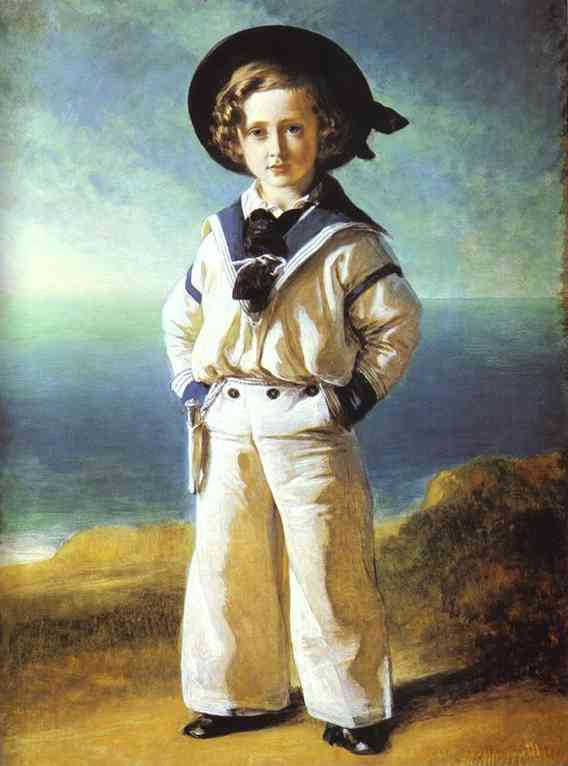The Victorian era was a time of great conservatism and when tattoos were more than taboo for most of society; however that didn’t stop some of the most important members of the British Royal Family obtaining tattoos – including future Kings!

A young Prince of Wales – the future King Edward VII. Some years after this portrait, he was to receive a tattoo! Alas pictures of the tattoo are difficult to come by,
You might think tattoos only became popular in the 20th century in the West. Well, that is far from being true. In fact, Tattoos were popular amongst various military personnel as well as the highest of the high…
In 1862 no lesser person than the Prince of Wales received his first tattoo. The Prince was the son of Queen Victoria and the future King Edward VII. His tattoo was a Jerusalem cross by Francois Souwan, obtained while he visited Jerusalem. He was then around 20 years old, and sent to the East by Victoria who seemed to have not been particularly fond of her dandy son.
While most British ports had had professional tattoo artists in residence since the 18th century, Edward’s tattoo started a fad among the aristocracy. In 1882, Edward’s sons, the Duke of Clarence and the Duke of York (the later George V), were tattooed by the Japanese tattooist Hoti Chiyo. The Duke of York received a tattoo of a dragon on his arm. Later, the prince received more tattoos from Tom Riley and Sutherland Macdonald.
He wrote in a letter, “we have been tattooed by the same old man who tattooed papa, and the same thing too, five crosses. You ask Papa to show you his arm,” although that sentence has been the subject of debate.
All the 19th century dictionaries and encyclopedias suggest that among Europeans, tattooing was confined to seamen, and sometimes soldiers. The first permanent tattoo shop in New York City was set up in 1846 and later began a tradition by tattooing military servicemen from both sides of the civil war. Samuel O’Reilly invented the electric tattooing machine in 1891.
However, in 1861 the French naval surgeon Maurice Berchon published a study on the medical complications of tattooing, and after this, the navy and army made efforts to ban tattooing within their services.
Another aspect of 19th century tattooing was people who claimed to have been unwillingly tattooed. For example, John Rutherford arrived on the exhibition scene in 1827 with a full Maori Moko tattoo on his face. He made quite a profit from telling how he was captured and tattooed by force.
Sadly, none of the British princes seems to have been keen on showing off their royal tattoos in public and to this day photos are rather difficult to come by.
Do let us know if you come across any!
This article is provided by Geerte de Jong from http://19thcentury.wordpress.com.
Enjoy the article? Well, why not read about the British royal family’s civil war in a very different age? Click here.
